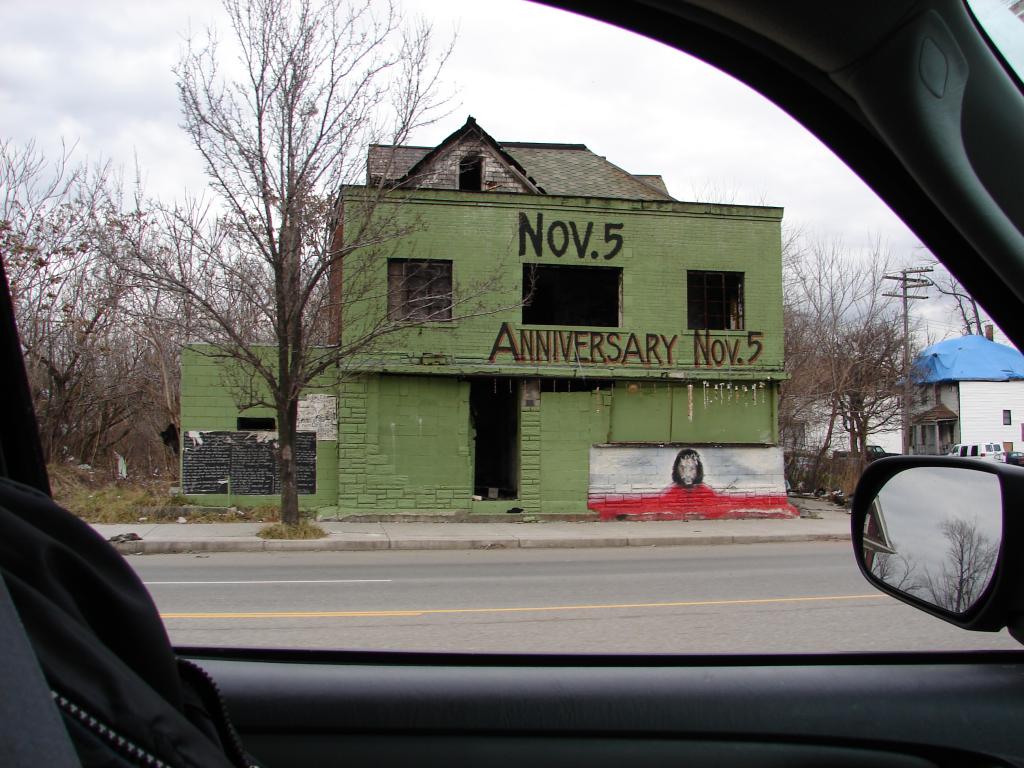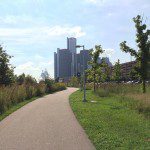This was featured in The Atlantic, based on a report in the Detroit Free Press: in order to get to his job in a suburban Detroit factory, a man spends most of his non-work waking hours walking (and gets virtually no sleep, either). The trip is 23 miles each way; much of that is travelled by bus but he walks 7 miles from the closest bus stop to his workplace, to get to work; and, for the return trip, walks those 7 miles, plus a further 5 home because the bus line doesn’t travel as far at night. All told, this is 21 miles (yeah, I don’t see where the additional 2 miles comes from, either; perhaps that’s the distance to the first bus stop in the morning).
The Freep article focuses on his dedication, and the banker who, after seeing him on that route so often, began giving him rides. The Atlantic focuses on the failures of the area to provide sufficient mass transit to ease his commute. And the commenters on the Atlantic article (the Freep comments wouldn’t load) focused to a large degree on the question: “why doesn’t he ride a bike?”
But here’s what the Atlantic missed: there is a bus route that comes pretty darn close to being ideal:
His employer is mentioned as Shain Mold & Engineering; the google map shows that this is located on Crooks, just north of Auburn, in Rochester Hills. And SMART route 465 plys a route that’s nearly ideal – from Woodward in Detroit (which the article mentions as the major cross street near his home) to the Chrysler Tech Center in Auburn Hills, passing by Auburn and Adams, only two miles from his workplace. (Yes, it’s still a two mile walk, but it’s a far cry from 7 miles!)
So what’s the problem? The bus travels this route northbound during the morning rush hour, and southbound during the evening rush hour — and he works the afternoon/evening shift, from 2 – 10 pm.
Which means it’s not a matter of the city/region being unwilling to pony up the money for bus service, but that, outside these key hours, they couldn’t fill the farebox enough to justify the route. Now, it is true that the article mentions “cutbacks” so perhaps there was more daytime northbound and nighttime southbound service than now (perhaps the additional 5 miles from the last bus stop to his home in the city were added after night service in the city was curtailed) but at the same time, it still seems out-of-the-norm for a suburb to have plentiful odd-hours bus service, cutbacks or no.
And, indeed, there is also a service intended to help low-income reverse-commuters:
Detroit’s director of transportation said there is a service Robertson may be able to use that’s designed to help low-income workers. Job Access and Reverse Commute, paid for in part with federal dollars, provides door-to-door transportation to low-income workers, but at a cost. Robertson said he was not aware of the program.
So what’s my point? Just that things aren’t always as simple as they seem. And the problem is much more difficult than just “mean Detroit suburbs that won’t fund transit” because transit from the city to suburban jobs is an issue everywhere (an the evening shift compounds it) — though most of the time, it produces joblessness, because people simply won’t go to these extreme lengths to get to a job.
UPDATE:
Thought about this some more.
The Atlantic commenters, as I said, are, to a large degree, saying, “why doesn’t this man ride a bike?” and my initial reaction was, there’s probably some entirely reasonable reason why he doesn’t — perhaps he never learned and is unable to now — so it’s not helpful to focus on that.
But it’s not just him. There are surely plenty of other people with difficult commutes where mass transit doesn’t run, or who work a shift that mass transit doesn’t cover, and countless more who turn down jobs because the commute is too much to handle. And the wider issue is something that a greater “bike culture” — not just for hipsters but for everyday people who don’t have access to cars or transit, generally — would go a long way towards helping. (Hey, I even wrote about this before. And I have got to get tags on my posts!) If this man had indeed grown up riding a bike, along with his neighbors, it would seem much more natural to use one of those bike racks, or even take a “junker” bike up to the Mall where the bus route ends, and keep it there when not in use. And if the pedaling becomes too much, an electric bike would be an option (but only, of course, if there were enough of a biking culture that these were plentiful and available used). And the inner city is the right place to promote biking because of the significant number of carless (not by-choice) residents.
Oh, and the ending to this particular story is a GoFundMe campaign that’s gotten him a car and money to put towards insurance (a huge cost in Detroit) and other costs. But that’s not a long-term solution for everyone else.












